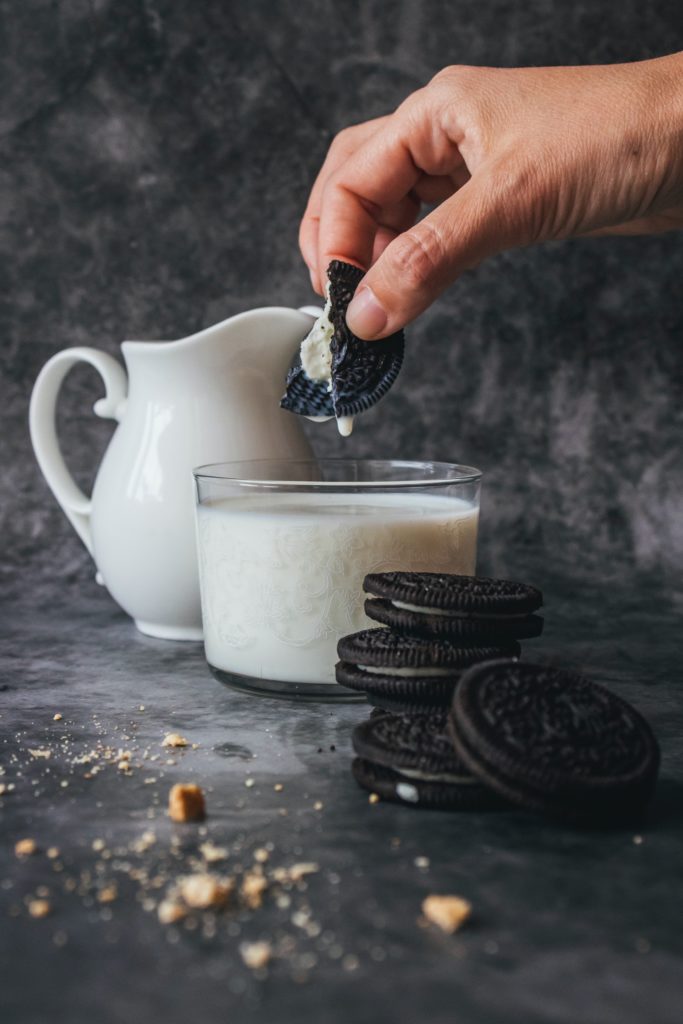By Alexander J. Taylor
For the longest time, I disliked coffee. I distinctly remember back in high school in the late 2000’s, that the majority of my peers were drinking coffee. Heck, I even remember when PSL’s became the thing to enjoy when the year came ‘round to Fall. However, I could not stand the bitterness of most coffee; but if you gave me a mocha with extra whipped cream and chocolate… well I just couldn’t say no. It wasn’t until my second year of graduate school when I started to try, and now consume every other day, coffee. I mainly blame my best friend for asking me to go on walks with her to Starbucks. I would stand there, glancing over the menu, maybe get a tea or a “refresher” until I decided to just try a latte. Specifically, Starbucks had just added dairy-free milks to their menu, and I enjoyed the taste of almond milk with my morning cereal. Mind you, I also added two scoops of vanilla bean powder (which I highly recommend over the vanilla syrup), but I really enjoyed that cup of coffee. Y’see, back at home, my fiance and I were starting to phase out milk as an option, preferring almond milk in most cases. To save some money at home, I decided to buy some pre-made, cold coffee from the store and add my own ingredients to it. That’s when I found the holy grail of all non-dairy milks: Oatmilk.
If you have not tried oatmilk in your coffee yet, I cannot urge you enough to go out and try some as soon as possible. It’s creamy, it’s a little sweet, and it works with almost any flavoring combination I have tried. Oatmilk goes extremely well with cereal, smoothies, oatmeal, soups, banana bread, and also with milk teas. It is my personal preference for any non-dairy milk, overall, but it is not the only one.
Here at ScienceMeetsFood, we have done a handful of articles on plant-based or dairy-free milks, with the most recent one discussing the functionality of milk compared to dairy-free and an article on the use of “dairy product names” in plant-based labels. However, in late 2019, the major pathfinder in commercial oatmilk, Oatly, expanded into over 7,000 coffee shops and grocery stores. While it was and is not the only commercial oatmilk, this explosion of non-dairy milk products led the charge for several companies to begin creating vegan or dairy-free-based products, such yogurts, chocolates and chocolate-products, and a multitude of other products! While dairy-based products are not the only ones getting vegan- or vegetarian-friendly makeovers, there is a lot of hubbub surrounding it all.

Image from OurHarvest
As food scientists, we understand that there are set definitions to what makes a certain product to be labeled as such. These “standards of identity” (SoI) typically come from a governing body like the FDA, USDA, or the like. For example, a milk chocolate, by definition, must contain at least 10% chocolate liquor, at least 3.39% milkfat, and at least 12% milk solids. Comparatively, dark chocolate does not have a SoI at all. Typically, dark chocolate is seen as no milkfat or milk solids within the product and is 35% or more of cacao solids. On the specifics for milk, “FDA’s [SoI] for milk is the ‘lacteal secretion, practically free from colostrum, obtained by the complete milking of one or more healthy cows.’ [….] the product shall be pasteurized or ultra-pasteurized and must contain not less than 8.25% milk solids not fat and not less than 3.25% milkfat.” Which makes things difficult for “dairy-free milk” because they are therefore not “milk.” These definitions crucially impact the dairy industry, as sales have been slowly going down. In fact, some companies within the dairy-industry have filed for lawsuits to remove “milk,” “butter,” “lactose-free,” and other words and phrases associated with dairy products. Thus, it has become tricky for dairy-free milk products and their verbiage and has caused the FDA to rethink the SoI for “milk” as a whole.
While almond milk and oatmilk are the two most popular items commercially available, there are several other dairy-free milk products that should be mentioned! Elmhurst 1925 is one such company that offers a large variety of dairy-free milk products, like ice creams, creamers, and “barista-editions.” Elmhurst has everything from walnuts to hazelnuts to hemp seed milks or creamers. Even with a peanut milk that literally tastes like liquid peanuts! All of these products contain a decent amount of protein, dietary fiber, and/or vitamins and minerals, which make them nutritionally valid as products! So, with all these choices, there must be more ways to incorporate dairy-free products into commercial products and homemade meals. We have seen vast improvements in commercial products, but homemade products need time to get there and here’s why.

Image from Elmhurst
As aforementioned by the functionality article, milk is an oil-in-water emulsion that contains a hefty amount of saturated fatty acids. Along with fat, most milks are a good source of protein. These two key differences are what makes dairy-free milks difficult to work with in as many forms as typical dairy milks. The fat content helps to determine mouthfeel, texture, and sheen, whereas the protein content helps to form a gel matrix, stabilizer for emulsions, and for coagulation in items like cottage cheese and cheeses. Dairy-free milks typically have some form of “plant protein” from pea, soy, or nuts. They also have some fats that are from vegetable oils like sunflower, soy, rapeseed, or nuts. As most vegetable oils are higher in unsaturated fatty acids, the fat content is similar, but the mouthfeel and texture is very different. Plus, some dairy-free milks are flavored and won’t work well as mac and cheese milks! So be bold, brave, and not afraid to try different recipes and see what works and what doesn’t work. At the end of the day, we are exploring into a new culinary territory and you could be the next pioneer into the great non-dairy world.
So, let’s recap over all: Non-dairy milks, or non-dairy beverages, are here and they are here to stay. They are functionally different from milk and cannot substitute everywhere, but non-dairy is only going to increase. The amount of growth we have seen within the past few years, alone, has been tremendous. From here, as demand increases, more products will be made. While some consumers may be hesitant, and rightfully so, feel free to use this time to slowly incorporate some non-dairy items into your diet. Try the latest creme brulee latte from Starbucks, but with oat milk! If you make coffee at home, use an almond-based, caramel creamer. Dunk some Oreos in a creamy walnut milk! If you still love your dairy products, and trust me and my cheese drawer, you can still enjoy dairy products for what they are. No matter what you choose, just recognize that the food industry is slowly changing and I am excited to see what lies ahead!

Image by Tijana Drndaski from Pexels

A.J. Taylor | Linkedin
SMF Blog Writer
A.J. earned his degree in Biochemistry from Judson University and his Master’s in Food Science and Human Nutrition from the University of Illinois at Urbana-Champaign. His research then focused on Listeria monocytogenes, but has now transitioned into a Ph.D. program at UIUC in the hopes to discover more about the cocoa bean fermentation process using genomic, bioinformatic, and biochemical tools to define chocolate flavor from start to finish. A.J. emphasizes on the importance of science communication and loves to discuss multiple topics in the Food Science realm. A.J. is also an avid gamer from board games to video games, as well as a podcast-lover, if you have any recommendations, he is all ears!






Leave a Reply